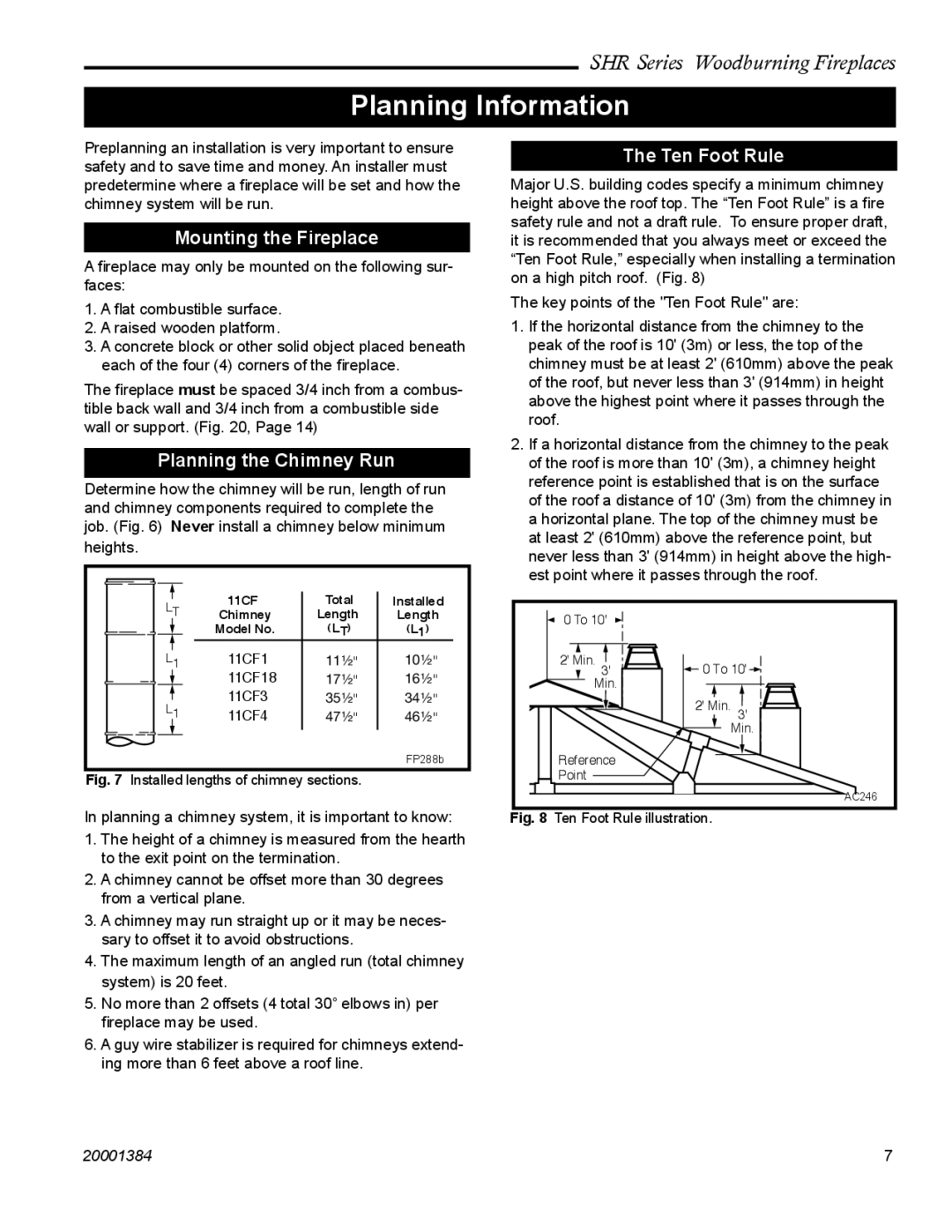SHR36, SHR42A, SHR48, SHR52 specifications
Vermont Casting gas fireplaces, including the SHR42A, SHR36, SHR48, and SHR52 models, stand out for their construction quality and innovative technologies. These models are designed to provide not only warmth but also aesthetic appeal, making them an attractive addition to any home.The SHR series features a variety of sizes to accommodate different spaces, with the SHR36 being the smallest at 36 inches, while the SHR52 is the largest with a 52-inch dimension. These options allow homeowners to choose a model that best fits their room size and heating needs. Each unit prides itself on powerful heating capabilities, efficiently distributing warmth through advanced heat exchanger systems.
One of the standout features of these fireplaces is their use of high-quality cast iron construction. This material not only adds durability but also enhances the fireplace’s ability to retain and radiate heat. As a result, users experience effective and consistent heating, ensuring comfort during colder months.
The Vermont Casting SHR models incorporate state-of-the-art gas burning technology, including dual-flame ports and easy-adjust controls. This technology allows for precise flame adjustment, enabling users to set the ambiance they desire. Additionally, the fireplace's realistic flame presentation creates a cozy atmosphere reminiscent of traditional wood-burning fires.
Another significant characteristic of the SHR series is the option for customization. Homeowners can choose from various decorative front options, styles, and finishes, allowing for a tailored look that blends seamlessly with their existing décor. The cast iron grates and multiple log options enhance the realistic appearance of the fireplace, making it a striking focal point in any room.
Safety features are integral to the design of these fireplaces. With a sealed combustion system, the SHR models ensure that gases are safely vented outside, minimizing the risk of indoor air pollution. The glass doors are tempered, offering extra protection while still allowing for an unobstructed view of the flames.
In terms of efficiency, the SHR series is designed with energy-saving technologies that maximize heat output while minimizing gas consumption. This efficiency not only lowers utility costs but also makes these fireplaces a more environmentally conscious heating option.
In summary, the Vermont Casting SHR42A, SHR36, SHR48, and SHR52 gas fireplaces offer a unique combination of elegance, efficiency, and exceptional heating capabilities. Their durable construction, advanced technology, and customizable features make them a choice that enhances both comfort and style for any home.

